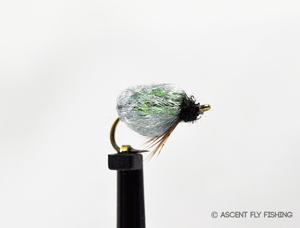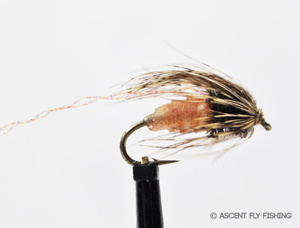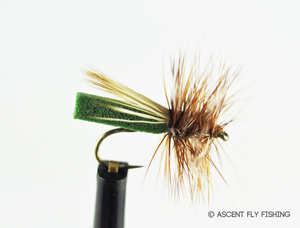
A Fly Fisher's Guide to Identifying and Matching Caddisflies: Part II
Having covered the life cycle and characteristics of each phase of the caddisfly in A Fly Fisher's Guide to Identifying and Matching Caddisflies: Part I, it's time to get down to the brass tacks and talk flies! With caddis patterns outnumbering the naturals 10 to 1, the intent of this article is to equip you with my top twelve patterns that can be used to match more species, on more waters, over a greater breadth of seasons. We affectionate call these our Deadly Dozen Caddis Flies!
Larva & Cased Caddis Patterns
Tied on hooks between Sizes 10 - 20, both the naked caddis larva and its case-enclosed variations will most frequently be fished in sizes 14 - 18. While usually well-anchored to the bottom of the stream, the larva and cased caddis patterns become particularly effective during runoff or after an influx of water, which rises levels below a dam that can wash the juveniles free and make them available for feeding trout.
Dry/Wet: Wet
Fly Category: Generalist Pattern
Color: Yellow or Green
Hook Size: 14 - 18
Dry/Wet: Wet
Fly Category: Attractor Pattern
Color: Tan with a Flashback
Hook Size: 12 - 16
Dry/Wet: Wet
Fly Category: Generalist Pattern
Color: Brown/Grey
Hook Size: 12 - 18
Caddis Emerger Patterns
Spanning the distance from the bottom of the lake or river through the surface of the water, the emerging caddis pupae offers some of the most consistent productive action for the fly angler. Fished both wet or suspended halfway between the water and the air, caddis emergers should be fished as a dropper behind your favorite dry pattern. They can be equally deadly both dead-drifted or swung through the water, letting the current pull it to the surface like the natural making a break for the air. While tied in sizes 10 - 20, your most productive sizes will be 14 - 18 similar to the larvae.
Dry/Wet: Wet
Fly Category: Generalist Pattern
Color: Tan or Olive
Hook Size: 12 - 20
Dry/Wet: Wet
Fly Category: Generalist Pattern
Color: Tan or Olive
Hook Size: 14 - 18
Dry/Wet: Wet
Fly Category: Generalist Pattern
Color: Tan, Olive, Cinnamon
Hook Size: 12 - 16
Dry/Wet: Dry
Fly Category: Generalist Pattern
Color: Tan or Olive
Hook Size: 12 - 20
Fly Category: Attractor Pattern
Color: Tan with Mylar Abdomen
Hook Size: 14 - 18
Adult Caddis Patterns
Without a doubt the most entertaining patterns to fish, the adult caddis flies will congregate around the water for esveral weeks, giving the fly angler ample opportunity to drop some dry flies on the water! The egg-laying caddisflies are both showy and plentiful, dancing and fluttering across the water, diving beneath the surface to deposit eggs, and returning to teh streams and lakes in numbers that can cover the surface. While the adults will be present in sizes 10 - 20, the most productive hook sizes will be between 14 - 20.
Dry/Wet: Dry
Fly Category: Generalist Pattern
Color: Tan, Olive, Grey, Black, or Pearl
Hook Size: 10 - 20
Dry/Wet: Dry
Fly Category: Generalist Pattern
Color: Tan or Grey
Hook Size:
Dry/Wet: Dry
Fly Category: Generalist Pattern
Color: Tan, Olive, Black
Hook Size: 12 - 18
Dry/Wet: Dry
Fly Category: Attractor Pattern
Color: Olive/Pearl
Hook Size: 12 - 20
Armed with these Deadly Dozen Caddis patterns, you should be locked and loaded for action during every phase of the caddis hatch! Observe which life stage and pattern is receiving the most frequent strikes, and try tying on two or even three of these hot patterns to better imitate the swarms of caddis moving through or on top of the water.















